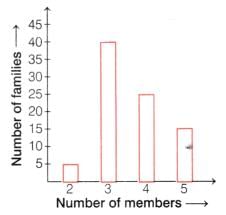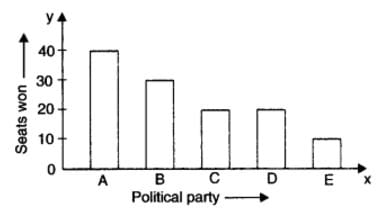Test: Data Handling and Presentation - 1 - Class 6 MCQ
10 Questions MCQ Test Mathematics (Maths) Class 6 - Test: Data Handling and Presentation - 1
Navya collected data on the favorite games of her classmates and found that 8 students prefer cricket, 5 prefer hockey, and 3 prefer football. What type of chart would best represent this data visually?
If a pictograph uses one symbol to represent 5 students, how many symbols would represent 25 students?
If a class of 30 students is represented in a pie chart and one section of the chart shows 10 students liking football, what angle does the football section represent?
You roll a dice 30 times and record the outcomes. If the number '3' appears 5 times, what is the frequency of '3'?
If a bar graph shows the number of books borrowed from a library during the week, and Friday has the longest bar, what does this imply?
In a survey, students' preferences for after-school activities were recorded. If 40% of students preferred sports, what type of graph would best display this data?
The following bar graph shows the number of members in each family of a colony.
The number of families having 3 members is

In a pictograph, each symbol represents 4 apples. If there are 3 symbols next to Tuesday, how many apples were sold on Tuesday?
The marks (out of 10) obtained by 28 students in a Mathematics test are listed as given below.
8, 1, 2, 6, 5, 5, 5, 0.1, 9, 7, 8, 0, 5, 8, 3, 0, 8, 10, 3, 4, 8, 7, 8, 9, 2, 0
The number of students who obtained marks more than Or equal to 5 is Competencty Based Question
Observe the following bar graph and answer the related question:

Which political party won the maximum number of seats?
|
92 videos|348 docs|54 tests
|




















